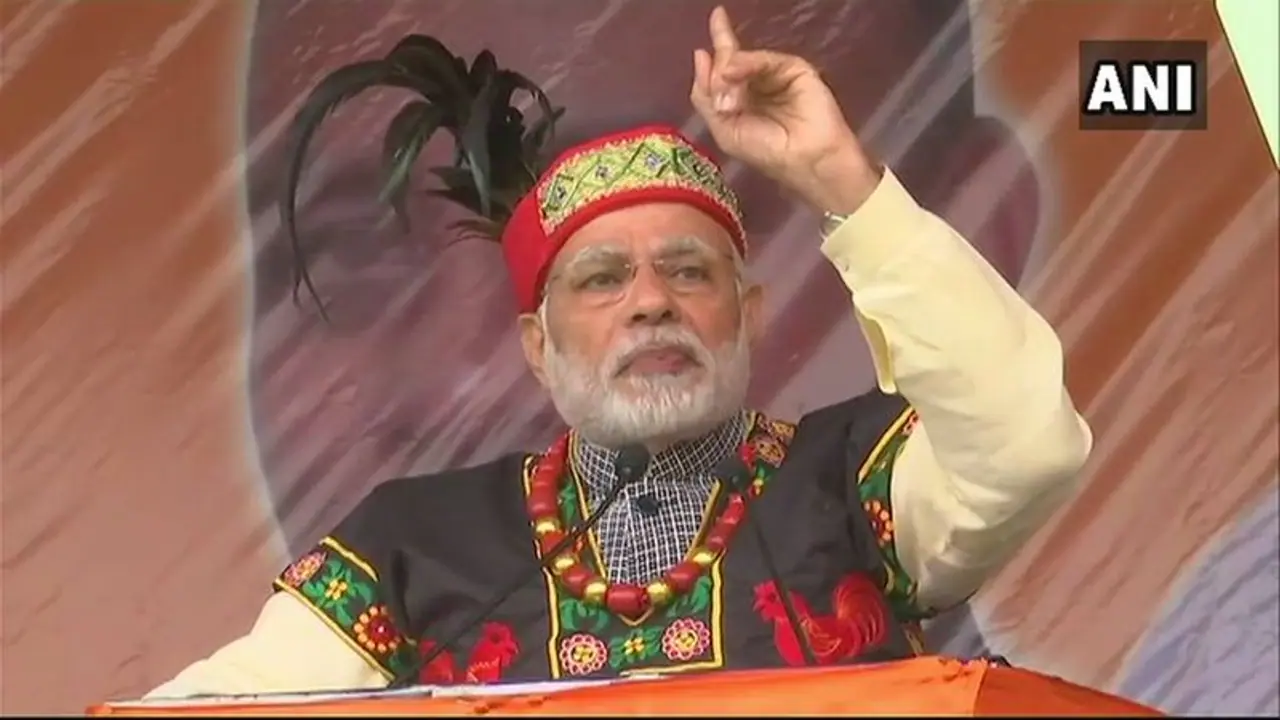The many measures taken by the Modi Government has led to militancy in the North East dying a natural death. But how did he make inroads?
One of the biggest achievements of the Narendra Modi government has been the handling of North East. The peace accord with the NSCN (IM) was aimed at long lasting peace and was also a step forward in removing contentious problems on the Naga issue.
Now, in a major development, the Last Bodo militant group left Myanmar and surrendered to Indian authorities. The surrender by the National Democratic Front of Boroland (S), which is a close ally of the Paresh Baruah led ULFA is being hailed as a masterstroke by security agencies.
Details of the surrender:
At least 50 heavily armed cadres of the group led by their chairman B Saoraigwra surrendered before the Indian forces. A huge cache of arms too were laid down by the members of the group.
Saoraigwra and members of his family were brought into India through Tamu, the border town of Myanmar on the international border with the Moreh town of Manipur. The group led by general secretary BR Ferrengga crossed the border to Long village in Mon district of Nagaland.
This major development is a result of the initiatives taken by the Indian government along with Myanmar. This development must also be credited to the initiative taken by the chief administrator of Bodoland Territorial Council, Hagrama Mahilary.
The Bodo Security Force was formed in 1986 and was in 1994 renamed as NDFB, following the rejection of the Bodo Accord of 1993. It was one of the biggest militant groups in the region and carried out strikes on non-Bodo civilians and security forces. The outfit operated out of Bhutan along with the ULFA. In the year 2003, the outfit was evicted by the Royal Bhutan Army, following which it shifted base to Myanmar.
The significance:
The most significant thing about this development is that the militants in the North East have started coming into the mainstream. They are shunning arms and becoming part of the system, which in turn would ensure long lasting peace.
In the long run such developments would only ensure that the Bodo autonomous council area under the 6th schedule of the Indian Constitution would be militant free. Such moves in future would encourage all armed groups in the jungles to come out and join the mainstream. They would also be actively involved in the peace talks that the Modi government has initiated.
The North East push:
For the Modi government, connecting North East through infrastructure and technology was top on the anvil. The UPA which had a significant presence in the North East was caused of delaying developmental projects in the North East.
Since 2014, after Modi took over as Prime Minister, there has been a heavy push in the North Eastern states. India’s longest rail and road bridge, the Bogibeel Bridge was inaugurated by the Prime Minister in 2018. 900 kilometres tracks of broad guage have been laid in the region.
The Transformation by Transportation policy of the government includes projects for more than 3,800 kilometres of national highways. It was a matter of pride for Manipur, when the country’s finest sportsperson, Mary Kom became a Rajya Sabha member in 2016. The National Sports University was established in Manipur.
On August 3 2015, the government of India and the NSCN signed the Nagaland Peace Accord to end insurgency. It was a historic move and the accord was signed after 80 rounds of talks by the best minds in the government. The accord recognised the unique history, culture, position of the Nagas and their sentiments and aspirations.
When it almost derailed:
Several anti national elements had threatened to derail several states in North East during the protest against the newly amended citizenship law. There was arson and it was found that groups such as Students Islamic Movement of India and the Naxalites had joined the protest and turned it violent.
The Modi government however wasted no time and sent its best minds to ensure that the situation is brought under control. The situation in Assam in particular could have gone from bad to worse.
Union home minister Amit Shah immediately summoned GP Singh, inspector general of the National Investigation Agency, Tapan Deka, additional director, Multi Agency Centre, Ajay Bhalla, the home secretary and Arvind Kumar, Intelligence Bureau chief.
All these officers have a proven record to counter violence in the North East. Deka was told to visit Assam and take stock. Deka was a former leader of the All Assam Students’ Union. Singh too was asked to leave for Assam and has a good record in managing law and order in Assam.
The quick thinking and sending in the right mix of officers to Assam saved the day. There were reports that the Naxalites and terror groups had infiltrated the protests. Further there was a plot hatched to burn down the secretariat. The officers on reaching Assam, took stock of the situation and ensured that the violence died down and normalcy was restored in the Northeastern states.
